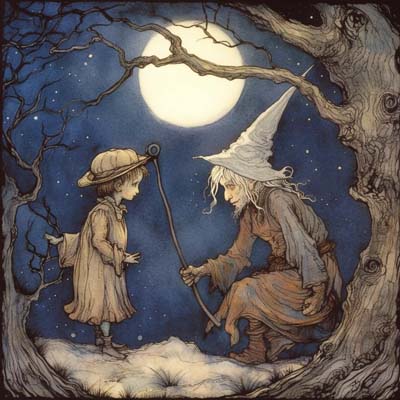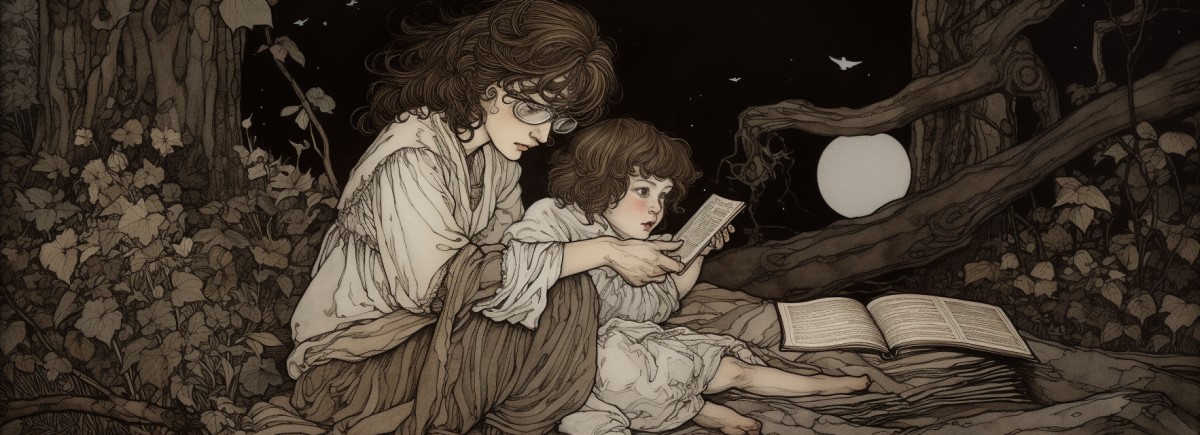Embarking on a Global Adventure: Classic Child Folklore Tales from Around the World
Hello, my friends!
 It's Leanne, back with the second post in our series exploring the enchanting world of child folklore. Last week, we dipped our toes into the vast ocean of child folklore, understanding its significance in preserving traditions, shaping societal values, and reflecting community beliefs. Today, we're diving deeper, immersing ourselves in the rich tapestry of stories that have danced on the tongues of children across the globe for generations.
It's Leanne, back with the second post in our series exploring the enchanting world of child folklore. Last week, we dipped our toes into the vast ocean of child folklore, understanding its significance in preserving traditions, shaping societal values, and reflecting community beliefs. Today, we're diving deeper, immersing ourselves in the rich tapestry of stories that have danced on the tongues of children across the globe for generations.
Child folklore tales are the heartbeats of our collective childhood. They are the stories that lulled us to sleep, the fables that made our eyes widen in wonder, the legends that ignited our imagination. They are the narratives that taught us about good and evil, about courage and cowardice, about love and hate, and about the countless shades of gray in between.
As we journey through these classic tales from various cultures, including Aesop's Fables, Grimm's Fairy Tales, and Anansi Stories, we'll delve into their origins, examine their meanings, and unearth the moral lessons they strive to impart. So, buckle up, my dear friends, and let's embark on this global storytelling adventure together!
Aesop's Fables - Lessons Cloaked in Simplicity
Let's begin our journey in ancient Greece with Aesop's Fables, an enduring collection of tales attributed to a slave and storyteller named Aesop, who lived around 620–564 BCE. These short, simple stories, populated by talking animals and inanimate objects, are more than mere entertainment; they are vessels of wisdom and morality.
Take, for example, "The Tortoise and the Hare." This classic fable teaches us the valuable lesson of perseverance and consistency. The hare, confident in his speed, takes a nap during the race, while the slow and steady tortoise pushes forward and ultimately wins. This tale reminds children (and adults!) that overconfidence and complacency can be our downfall, while determination and persistence can lead to success.
Another well-known Aesop's fable is "The Boy Who Cried Wolf." In this story, a shepherd boy repeatedly tricks the villagers into thinking a wolf is attacking his flock by crying out for help. When a real wolf finally appears, the villagers, weary of his lies, do not come to his aid. The moral of this fable is the importance of honesty and the consequences of lying. Aesop's fables, though brief and simple, impart life lessons that resonate with audiences across time and place.
Grimm's Fairy Tales - A Darker Shade of Enchantment
Next, we venture into the realm of Grimm's Fairy Tales, an iconic collection of stories compiled by German brothers Jacob and Wilhelm Grimm in the early 19th century. Originally intended for adult audiences, these tales are often darker and more gruesome than the sanitized versions we know today. Despite their darker origins, these stories have captivated the hearts and minds of children and adults alike for generations.
One such tale is "Cinderella," which has been adapted and retold countless times in various cultures. In the Grimm's version, Cinderella's cruel stepsisters cut off parts of their feet to fit into the glass slipper, only to be discovered by the prince due to the blood-soaked shoe. This tale, at its core, is about the triumph of good over evil and the power of inner beauty and kindness.
Another classic from the Grimm's collection is "Little Red Riding Hood." This cautionary tale tells the story of a young girl who, while venturing into the woods to visit her sick grandmother, encounters a cunning wolf. The story warns children about the dangers of straying from the path and not heeding their parents' advice. Additionally, it teaches the importance of being wary of strangers and trusting one's instincts.
Anansi Stories - Spinning Tales of Wit and Wisdom
Our storytelling journey now takes us to West Africa, the birthplace of Anansi, the legendary trickster spider. Anansi stories, which have spread throughout the African diaspora and Caribbean, feature a cunning, clever, and sometimes mischievous protagonist who often uses his wits to outsmart larger, more powerful creatures.
One popular Anansi tale is "Anansi and the Pot of Wisdom." In this story, Anansi gathers all the world's wisdom into a large pot and tries to hide it at the top of a tree. As he struggles to climb the tree with the pot, his young son suggests a better way to carry it. Anansi, realizing his son's wisdom, drops the pot, and the wisdom spills out, spreading across the world. This story teaches the importance of humility and the understanding that wisdom and knowledge can be found in even the youngest or seemingly least experienced among us.
Another classic Anansi story is "Anansi and the Tug of War." In this tale, Anansi tricks two opponents, Elephant and Hippopotamus, into engaging in a tug-of-war competition against each other, while he merely sits in the middle, holding both ropes. When Elephant and Hippopotamus finally realize they have been tricked, they begrudgingly acknowledge Anansi's cunning. This story highlights the power of intelligence and strategy, showing that brains can often triumph over brawn.
Universal Themes and Shared Cultural Values
As we journeyed through these classic child folklore tales from different corners of the world, we couldn't help but notice the universal themes and shared cultural values they espouse. Despite their disparate origins, these tales commonly underline the importance of virtues like honesty, humility, wisdom, and kindness. They also underscore the consequences of negative traits such as deceit, arrogance, and cruelty.
For instance, both Aesop's "The Boy Who Cried Wolf" and Anansi's "Anansi and the Pot of Wisdom" emphasize the value of honesty and truthfulness. The Grimm's tale of "Little Red Riding Hood" and Anansi's "Anansi and the Tug of War" both impart lessons on the importance of caution and the power of cunning.
Another shared cultural value evident in these stories is the triumph of the underdog or the less powerful character. In "The Tortoise and the Hare," the slow tortoise wins the race against the swift hare. In "Cinderella," the humble and kind-hearted Cinderella triumphs over her cruel and haughty stepsisters. In many Anansi stories, the small and seemingly weak spider outwits his larger, more powerful adversaries.
These universal themes and shared values serve as a bridge between different cultures, reminding us of our shared human experience. Despite our various geographical locations, languages, and customs, these tales reveal that we all grapple with similar dilemmas, aspire for similar virtues, and derive joy and wisdom from similar narratives.
As we wrap up our storytelling adventure for this week, I hope these classic tales from around the world have filled your hearts with wonder and your minds with wisdom. I can't wait to continue our folklore journey next week, where we'll explore some lesser-known but equally enchanting tales from different parts of the world.
Until then, keep crafting, keep imagining, and remember — each of us has a story to tell, a tale to weave, a bit of folklore to add to the grand tapestry of human history. Let's ensure our stories, like those of Aesop, the Brothers Grimm, and Anansi, carry lessons of love, wisdom, and virtue for generations to come.
Lesser-Known Child Folklore Tales Worth Exploring >

